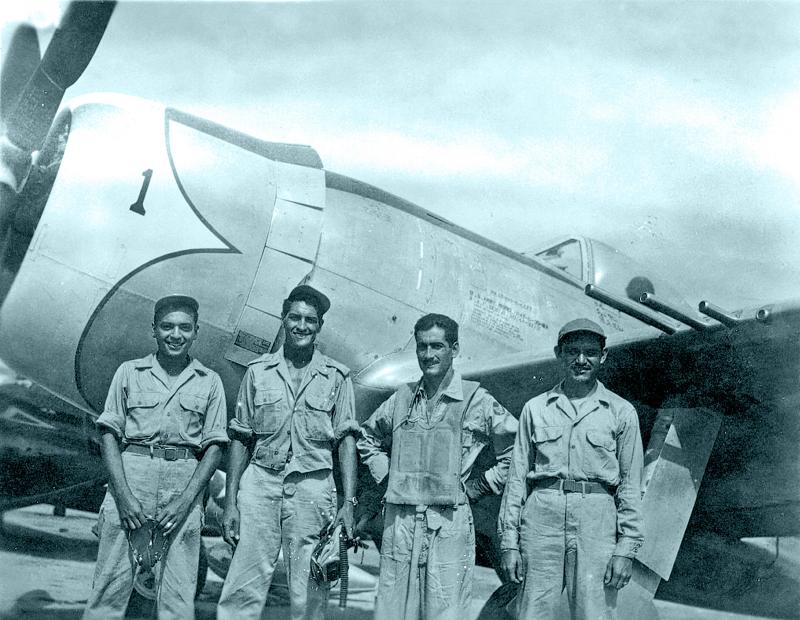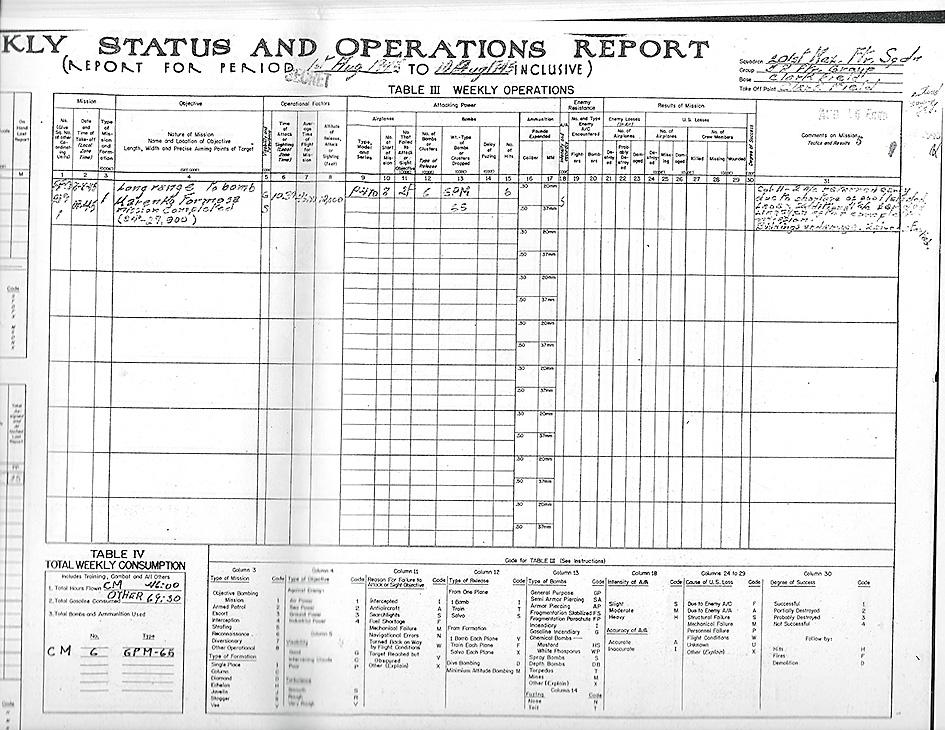“Stand up if you didn’t learn anything there,” said Michael Hurst, director of the Taiwan POW Camps Memorial Society. He was speaking at the conclusion of a talk by Chang Wei-bin (張維斌), an aviation historian and author of Formosa Air Raid (空襲福爾摩沙), a study of the allied bombardment of Taiwan during World War II.
Had there been anyone churlish enough to take Hurst’s challenge literally, it is unlikely they would have risen from their seat. Chang’s 90-minute lecture as part of the society’s program to commemorate the 75th anniversary of Victory Over Japan Day, or V-J Day, was full of surprises.
The breadth and depth of the information on offer at Taipei Film House on Saturday was mind-boggling. It included detailed images of locations island-wide that were bombed, what, if anything, was targeted and hit and what can be found in these spots now. There were also segments on supporting raids by other Allied nations. These included four night-time mining operations by the Royal Australian Airforce between March 6 and March 20, 1945 and two raids by the British Pacific Fleet the following month.

Photo courtesy of the US Air Force
“The goal assigned to them was to neutralize the Sakishima Islands,” says Chang, explaining that this was to support Operation Iceberg, the American invasion of Okinawa on April 1. “However, the Japanese launched a largescale suicidal attack on the American fleet, causing heavy damage to the aircraft carrier USS Hancock on April 7. So the British fleet was asked to attack Taiwan because the US navy thought the attack came from there. Actually, this was probably true — some came from Kyushu and some from Taiwan.”
MEXICO JOINS THE WAR
However, it was the bombshell of Mexico’s participation in the campaign that provided a truly unexpected blast from the past.

Photo courtesy of the Mexican Expeditionary Air Force
Initially, Mexican President Manuel Avila Camacho was hesitant to join the war. An ex-military man, Avila had joined the revolutionary army in 1914, the same year that then-Captain Douglas MacArthur had participated in the occupation of the Mexican port of Veracruz. Underscoring Avila’s reticence was sympathy among the Mexican elite for Nazi ideology.
However, the sinking of two Mexican oil tankers, killing at least 20 people, decided things. Avila declared war on the Axis powers on May 28, 1942. Privately, Japan was considered the real threat, details of a planned invasion of the US through northwestern Mexico having been intercepted by the Mexican army prior to Avila’s announcement. A contribution in the Pacific theater therefore seemed a natural option.
Nicknamed the Aztec Eagles, the 201st Mexican Fighter Squadron was a 300-strong volunteer force. Following training in Texas, the 201st had a spell in Idaho, which was cut short as it proved “too cold for Mexicans,” Chang says. After another stint in Texas and then physical examinations and instructions in California, the squadron departed for the Philippines on March 27, 1945 aboard the SS Fairisle.
“They were sent to Luzon in late April and used P-47 aircraft borrowed from the Americans,” Chang says.
On one of the slides in his presentation, Chang highlights the Mexican tricolor of green, white and red, which appeared with the American star emblem in various forms on the fighter-bombers.
“Because they were quite inexperienced, in Luzon, they first received training again alongside American fighters, and it was not until a year [after they had begun training in the US] that they flew missions to Taiwan in the name of long-range reconnaissance training.”
In fact, this underplays the Mexican contribution. Before the Taiwan missions, the 201st saw plenty of action, assisting with the bombing of Luzon and ground support. Aside from the Formosa raids, they flew dozens of combat missions in the Philippines.
BOMBING TAIWAN
During their first four reconnaissance sweeps off Taiwan, which took place between July 6 and July 9, they encountered the enemy but did not “fire a single shot,” Chang says.
However, these sorties were no breeze.
“We flew some very dangerous missions from Clark Field in the Philippines to Formosa, now called Taiwan,” Captain Miguel Moreno Arreola told the American Forces Press Service (AFPS) in 2003.“We saw more frequent airplanes from Japan on that 650-mile trip than ever before,” said Arreola, who spent six months in the Pacific.
And, according to the Mexican veteran, it was the enemy that was reluctant to engage.
“They didn’t want to have combat with us, because they knew our P-47s were better than their Mitsubishis,” Arreola said. “We could fly higher and faster.”
On Aug. 8, the Aztec Eagles flew to Taiwan again, this time on a bombing mission at Hualien, then known as Karenko. Six 1,000-pound bombs were dropped, though they appear to have missed their targets.
“They carried one bomb on one wing and a fuel tank on the other because it was too heavy to carry two bombs at the same time,” says Chang. “I’m not sure what was bombed, but according to their mission report, it was not effective.”
Regardless, the 201st returned home to considerable fanfare on Nov. 18, 1945. They delivered a national flag to Avila in a parade at the Zocalo, Mexico City’s main square, and a movie bearing the squadron’s name was released less than two weeks after their return. A station on Mexico City Metro Line 8 is also named in their honor. In 2003, Avila himself was awarded the Republic of China’s Order of Propitious Clouds with Special Grand Cordon.
As of May this year, only one combat pilot from the Aztec Eagles was still alive. In the aforementioned interview with AFPS, 100-year-old Colonel Carlos Garduno recalled meeting Avila, who beseeched the squadron to remember “your pilot comrades that are not with you because they’ve passed on to the hills of Mexico.”
Thanks to the efforts of historians such as Chang Wei-bin, the feats of the Aztec Eagles have also been kept alive in Taiwan, long after they soared through its skies.
For more information on Taiwan’s POWs by the Taiwan POW Camps Memorial Society, visit: www.powtaiwan.org. For further information about the bombing, visit: taiwanairblog.blogspot.com.

Following the rollercoaster ride of 2025, next year is already shaping up to be dramatic. The ongoing constitutional crises and the nine-in-one local elections are already dominating the landscape. The constitutional crises are the ones to lose sleep over. Though much business is still being conducted, crucial items such as next year’s budget, civil servant pensions and the proposed eight-year NT$1.25 trillion (approx US$40 billion) special defense budget are still being contested. There are, however, two glimmers of hope. One is that the legally contested move by five of the eight grand justices on the Constitutional Court’s ad hoc move

Stepping off the busy through-road at Yongan Market Station, lights flashing, horns honking, I turn down a small side street and into the warm embrace of my favorite hole-in-the-wall gem, the Hoi An Banh Mi shop (越南會安麵包), red flags and yellow lanterns waving outside. “Little sister, we were wondering where you’ve been, we haven’t seen you in ages!” the owners call out with a smile. It’s been seven days. The restaurant is run by Huang Jin-chuan (黃錦泉), who is married to a local, and her little sister Eva, who helps out on weekends, having also moved to New Taipei

The Directorate-General of Budget, Accounting and Statistics (DGBAS) told legislators last week that because the Chinese Nationalist Party (KMT) and Taiwan People’s Party (TPP) are continuing to block next year’s budget from passing, the nation could lose 1.5 percent of its GDP growth next year. According to the DGBAS report, officials presented to the legislature, the 2026 budget proposal includes NT$299.2 billion in funding for new projects and funding increases for various government functions. This funding only becomes available when the legislature approves it. The DGBAS estimates that every NT$10 billion in government money not spent shaves 0.05 percent off

Dec. 29 to Jan. 4 Like the Taoist Baode Temple (保德宮) featured in last week’s column, there’s little at first glance to suggest that Taipei’s Independence Presbyterian Church in Xinbeitou (自立長老會新北投教會) has Indigenous roots. One hint is a small sign on the facade reading “Ketagalan Presbyterian Mission Association” — Ketagalan being an collective term for the Pingpu (plains Indigenous) groups who once inhabited much of northern Taiwan. Inside, a display on the back wall introduces the congregation’s founder Pan Shui-tu (潘水土), a member of the Pingpu settlement of Kipatauw, and provides information about the Ketagalan and their early involvement with Christianity. Most